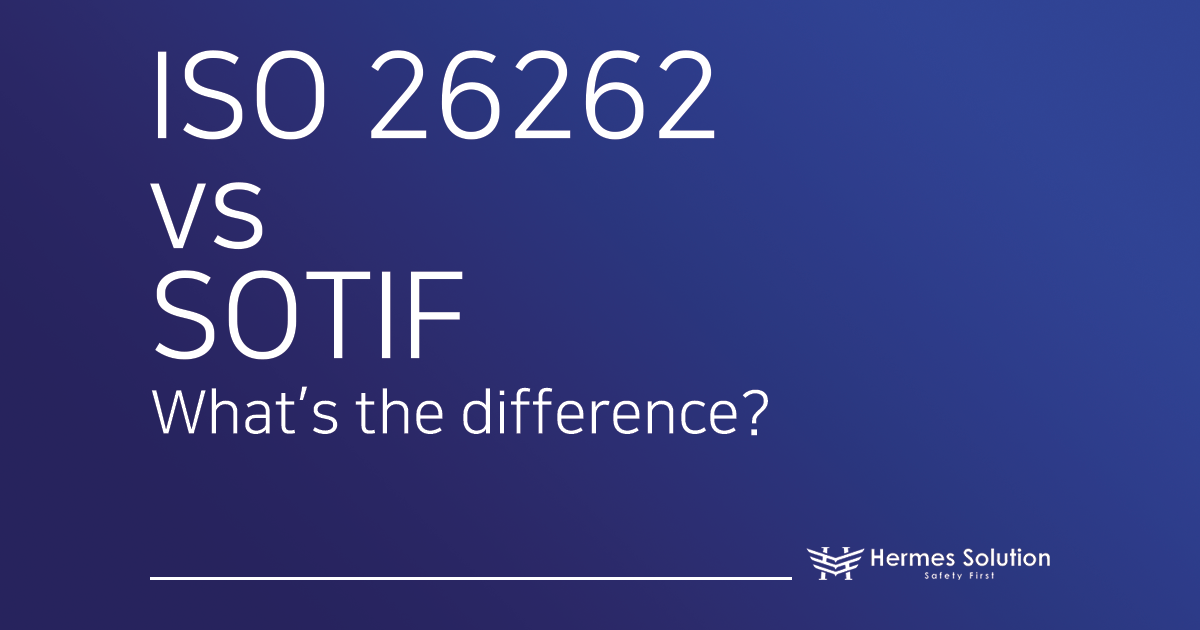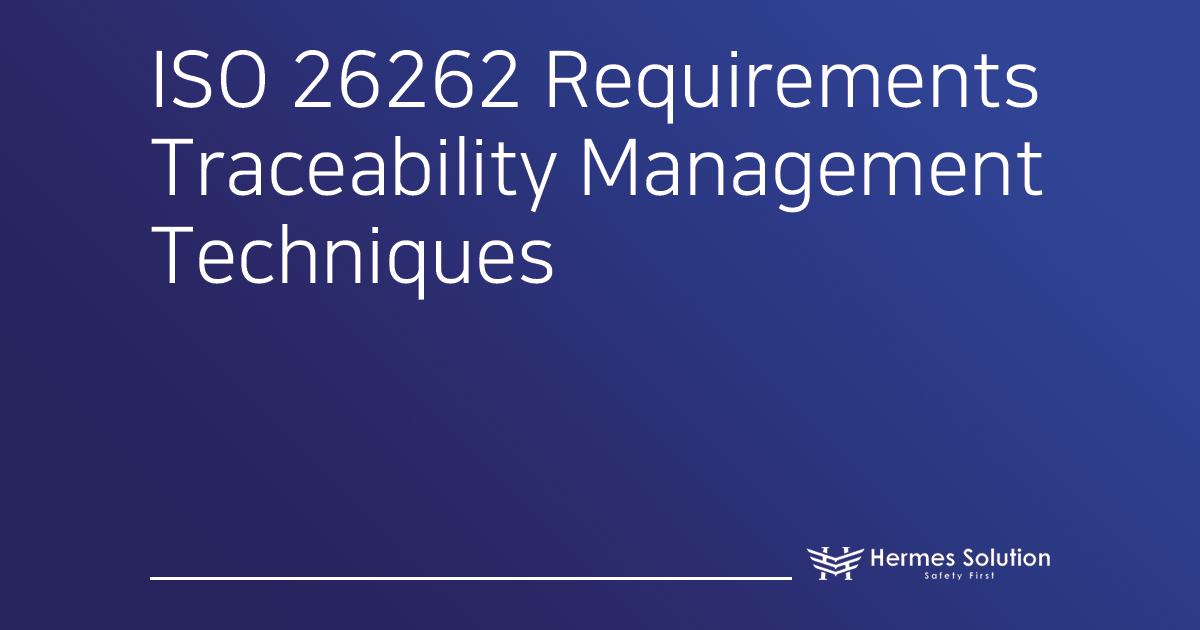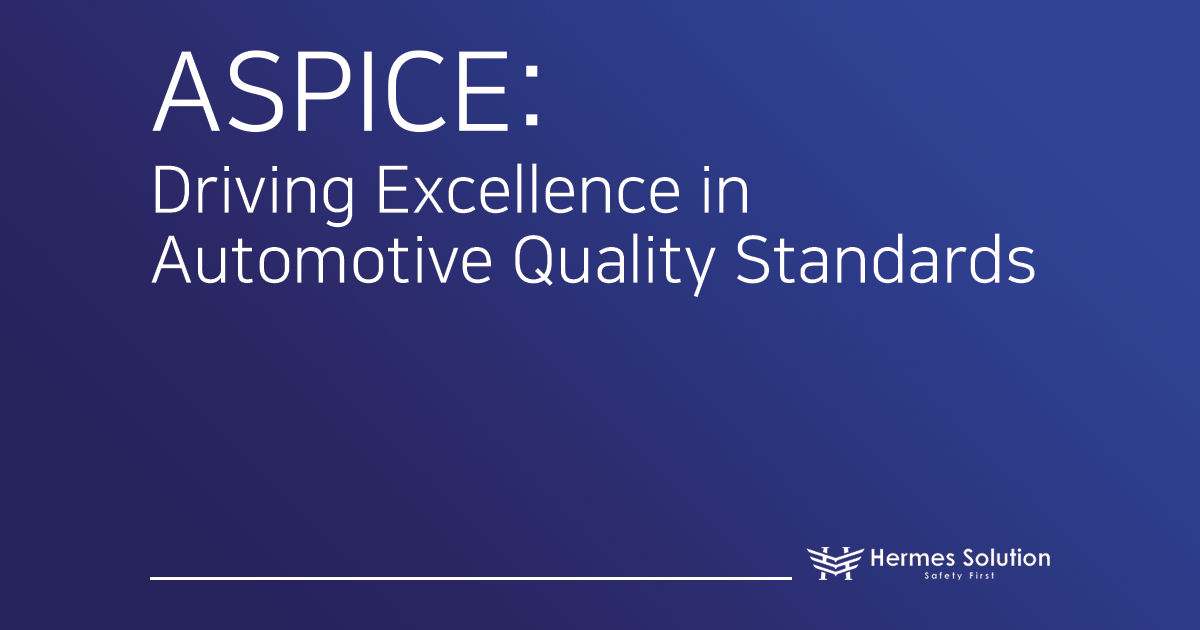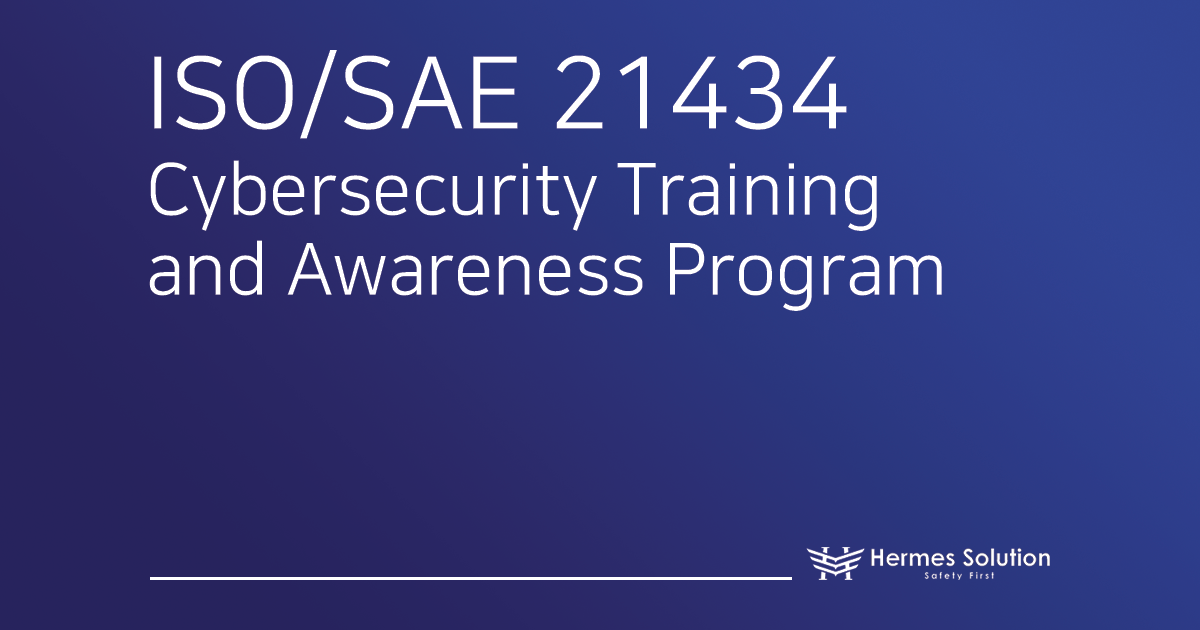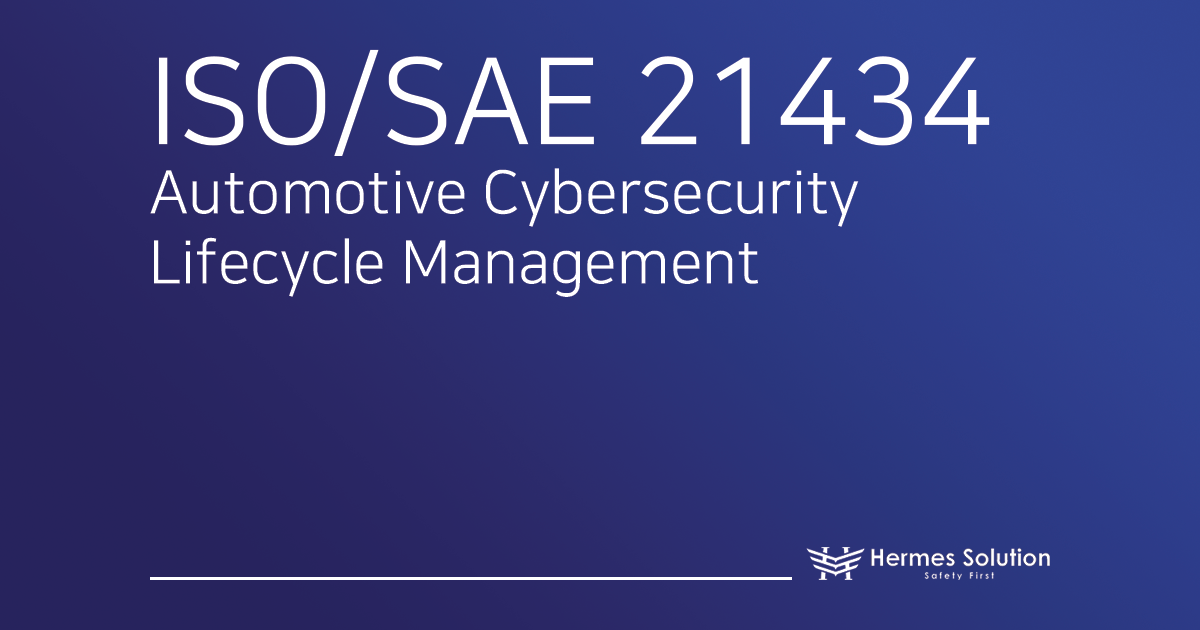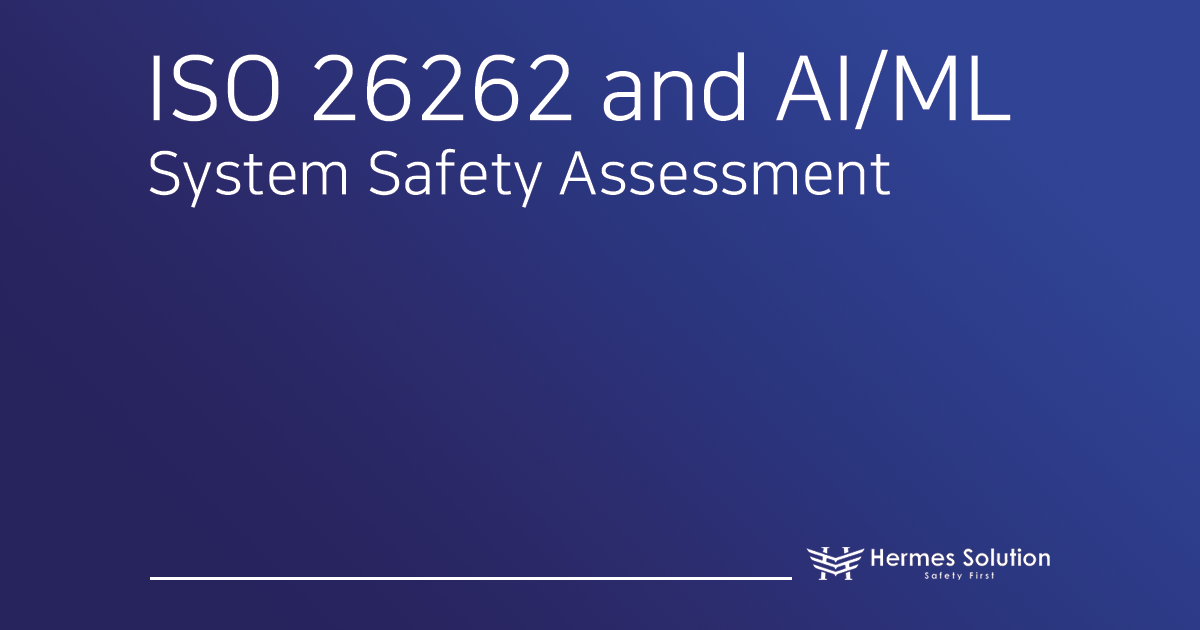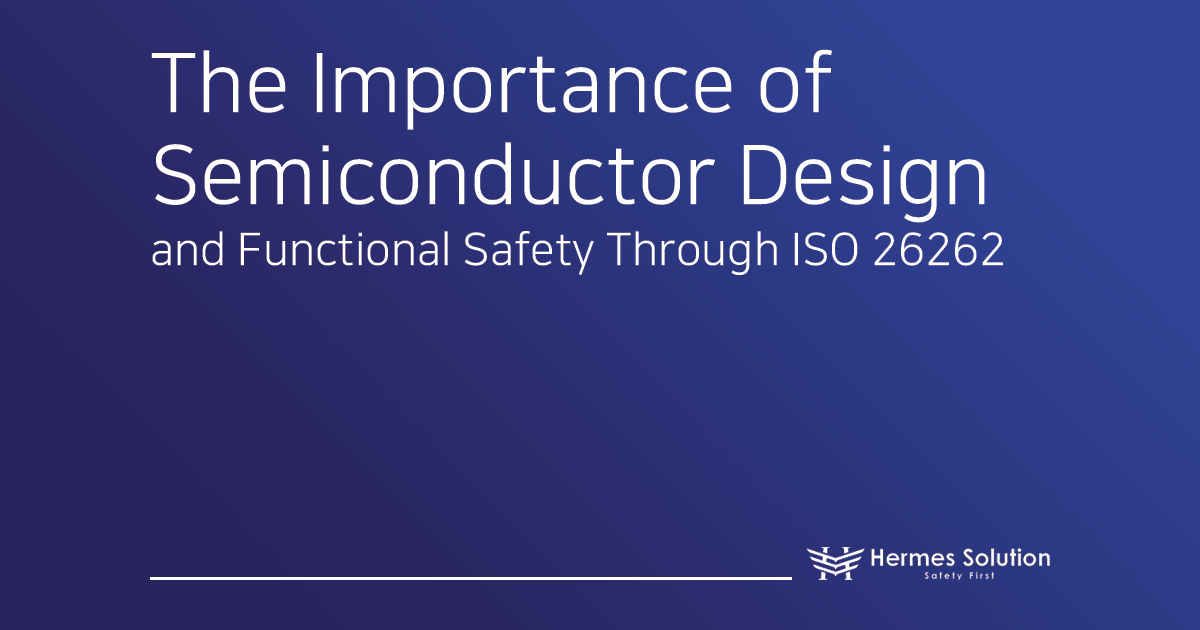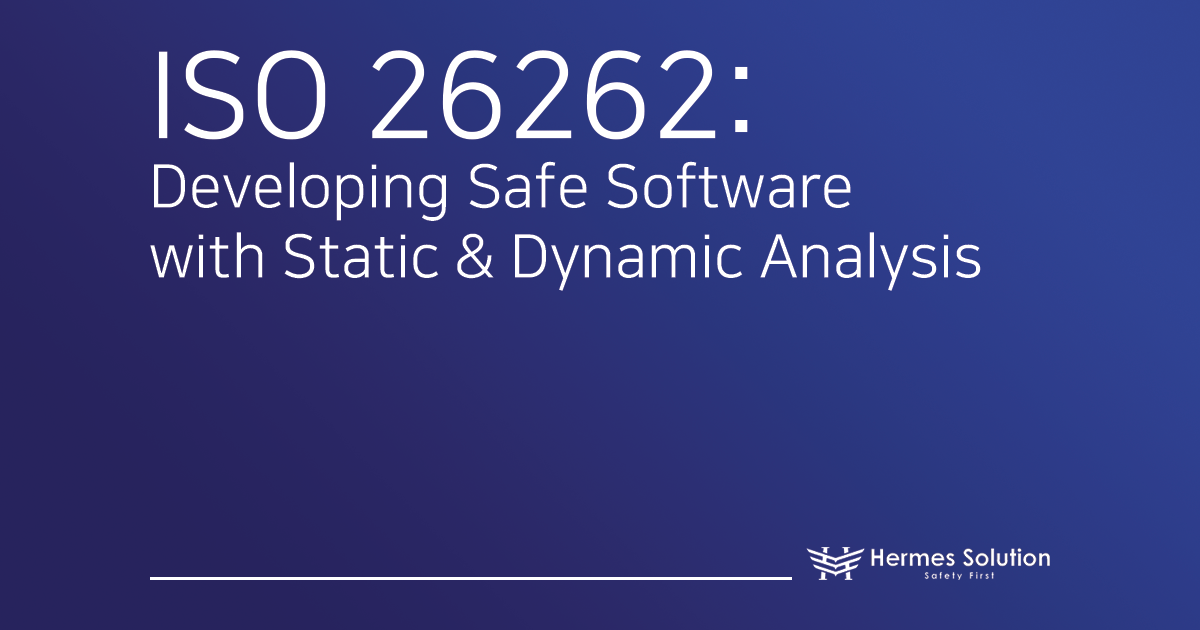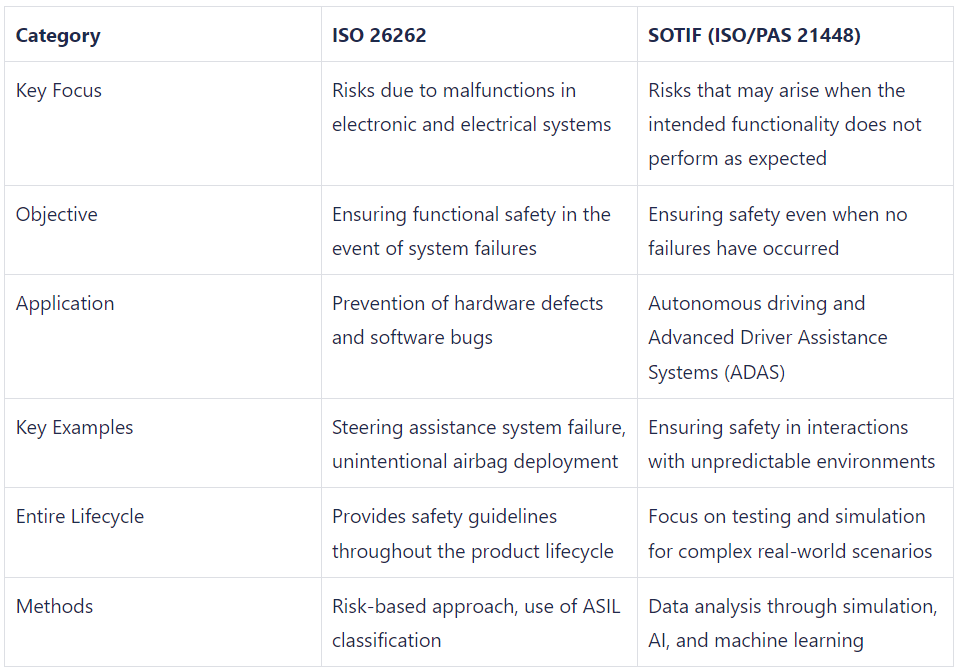
Automotive Functional Safety: ISO 26262
Key Focus
ISO 26262 focuses on the functional safety of automotive electrical and electronic (E/E) systems, addressing the prevention and management of issues arising from hardware and software failures within a vehicle.
Objectives
Ensuring Functional Safety: Ensures that systems operate safely even in the event of a failure.
Risk-Based Approach: Utilizes ASIL (Automotive Safety Integrity Level) to assess the level of risk and helps achieve an acceptable level of residual risk.
Safety in Design and Production: Aims to secure safety throughout the design and production stages.
Application
ISO 26262 is mainly used to manage risks related to hardware failures and software bugs, targeting electrical and electronic systems such as electronic control units, collision prevention systems, and electric power steering.
Key Examples
Steering Assistance System Failure: A malfunction in the steering assistance system causes the vehicle to turn direction contrary to the driver’s intent.
Collision Avoidance System Failure: A malfunction in the collision prevention sensor leads to the collision avoidance function failing to operate.
Unintentional Airbag Deployment: An electronic failure causes the airbag to deploy unintentionally.
Entire Lifecycle
ISO 26262 covers the entire product lifecycle, from the conceptual design stage through production, operation, maintenance, and decommissioning, ensuring safety at every stage.
Methods
Risk Analysis and ASIL Classification: Identifies risk factors and assesses the severity of those risks, assigning an ASIL rating accordingly.
System Development and Verification: Verifies that requirements are met at each stage, ensuring the system operates as expected.
Verification and Review: Continuously checks the system’s safety through ongoing verification and reviews.
Safety Of The Intended Functionality: ISO/PAS 21448
Key Focus
SOTIF focuses on the risks that may arise when the intended function of a system does not perform as expected, addressing safety issues related to functional limitations or interactions in unforeseen situations.
Objectives
Ensuring Safety in a Non-Fault State: Aims to ensure safety even when the system is operating within its performance limits or under unexpected conditions.
Response to Unexpected Situations: Focuses on enabling the system to respond appropriately under uncertain conditions.
Application
SOTIF is primarily intended for use in autonomous vehicles and advanced driver assistance systems (ADAS). It addresses risks stemming from performance limitations or unforeseen environmental changes, focusing on ensuring the safety of autonomous vehicles.
Key Examples
Response to Environmental Changes: The vehicle fails to respond appropriately to unexpected weather conditions or road changes.
Sensor and Algorithm Performance Limitations: The vehicle’s sensors collect incorrect data, leading to malfunction.
Misuse by Humans: Manages the risks when users unintentionally misuse the system.
Entire Lifecycle
SOTIF covers the entire development lifecycle, including design, verification, and review, striving to eliminate uncertainties in the design phase. Verification and simulation are essential to reduce risks that may arise during the intended function of the system.
Methods
Simulation and Testing: Simulates various scenarios to test how the system reacts to unexpected situations.
Use of AI and Machine Learning: Analyzes large datasets to predict how the vehicle will respond in complex real-world environments.
Performance Limitations Evaluation: Identifies the functional limits of the system and evaluates risks under unforeseen circumstances.
ISO 26262 and SOTIF are key standards for ensuring the safety of automotive systems, addressing different aspects of safety. ISO 26262 focuses on safety in the event of failures within electrical and electronic systems, including hardware and software, while SOTIF focuses on managing risks that may occur even in the absence of failures. Together, these standards are complementary and play a critical role in ensuring the safety of highly complex systems such as autonomous vehicles.
